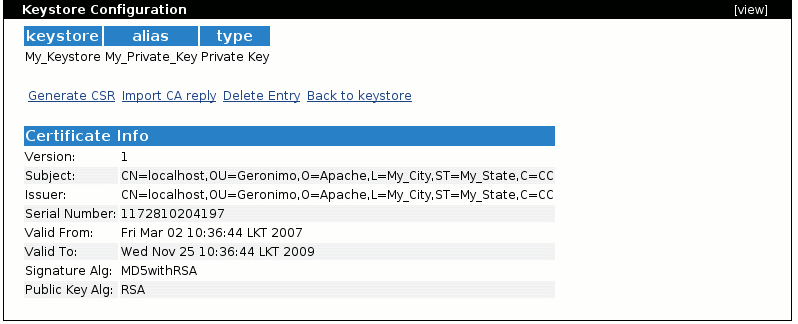Apache Generate Csr Private Key
How to Generate a CSR Using Apache OpenSSL. For starters, you’ll need to have SSH access at server- and root-level permissions in order to generate your CSR and Private Key. Using Putty, connect to Apache Server SSH and login as root. Type the command below when prompted. This document provides instructions for generating a Certificate Signing Request (CSR) & private key on Apache. If these instructions are unable to be used on the server, RapidSSL recommends that the server vendor or an organization that supports Apache be contacted. 2020-1-2 The 'public key' bits are included when you generate a CSR, and subsequently form part of the associated Certificate. To check that the public key in your Certificate matches the public portion of your private key, you simply need to compare these numbers. A CSR is a file containing your SSL Certificate application information, including your Public Key. Certificate Auto-Requester: We provides a useful tool to automatically create a public/private key pair on your local machine then use this key pair to generate a CSR and automatically submit it to us over a secure SSL connection to create your certificate for Apache.
The following instructions will guide you through the CSR generation process on Apache OpenSSL. To learn more about CSRs and the importance of your private key, reference our Overview of Certificate Signing Request article. If you already generated the CSR and received your trusted SSL certificate, reference our SSL Installation Instructions and disregard the steps below.
1. Log In
Apache Shiro
Log in to your server’s terminal via Secure Shell (SSH).
2. Run CSR Generation Command
Generate a private key and CSR by running the following command:Here is the plain text version to copy and paste into your terminal:
Note: Replace “server” with the domain name you intend to secure.
3. Enter your Information
Enter the following CSR details when prompted:
- Common Name: The FQDN (fully-qualified domain name) you want to secure with the certificate such as www.google.com, secure.website.org, *.domain.net, etc.
- Organization: The full legal name of your organization including the corporate identifier.
- Organization Unit (OU): Your department such as ‘Information Technology’ or ‘Website Security.’
- City or Locality: The locality or city where your organization is legally incorporated. Do not abbreviate.
- State or Province: The state or province where your organization is legally incorporated. Do not abbreviate.
- Country: The official two-letter country code (i.e. US, CH) where your organization is legally incorporated.
Note: You are not required to enter a password or passphrase. This optional field is for applying additional security to your key pair.


4. Copy the CSR text from the file
Locate and open the newly created CSR in a text editor such as Notepad and copy all the text including:
Note 1: Your CSR should be saved in the same user directory that you SSH into unless otherwise specified by you. Note 2: We recommend saving or backing up your newly generate “.key” file as this will be required later during the installation process.
5. Generate the order
Apache Download For Windows 10
Return to the Generation Form on our website and paste the entire CSR into the blank text box and continue with completing the generation process.
Upon generating your CSR, your order will enter the validation process with the issuing Certificate Authority (CA) and require the certificate requester to complete some form of validation depending on the certificate purchased. For information regarding the different levels of the validation process and how to satisfy the industry requirements, reference our validation articles. Generate privte key aws ec2.
After you complete the validation process and receive the trusted SSL Certificate from the issuing Certificate Authority (CA), proceed with the next step using our SSL Installation Instructions for Apache OpenSSL.